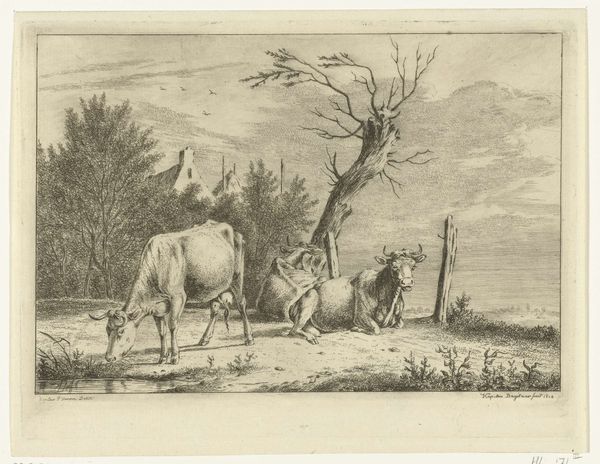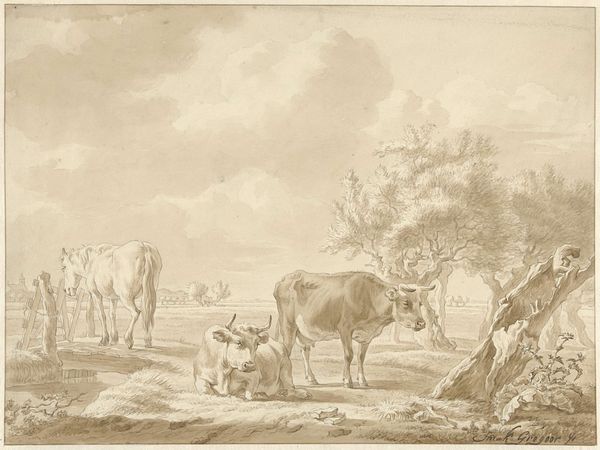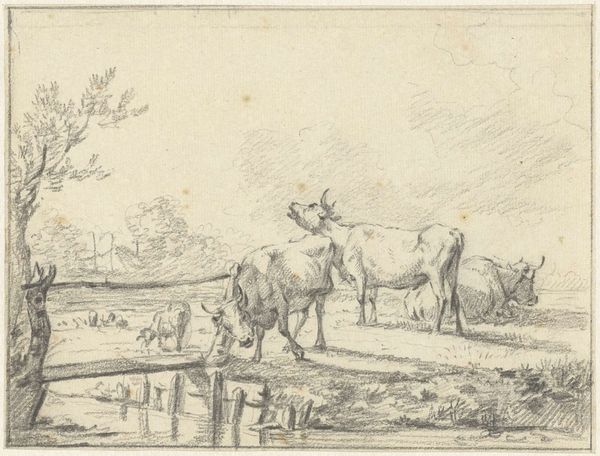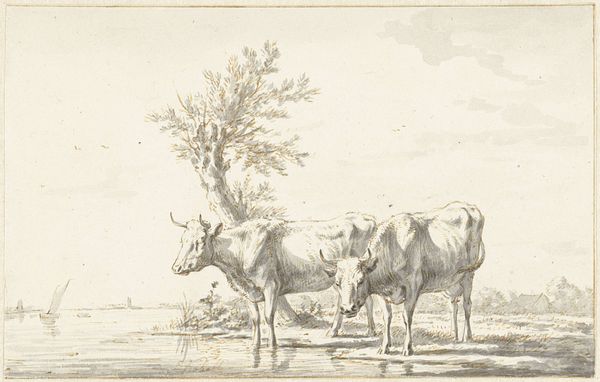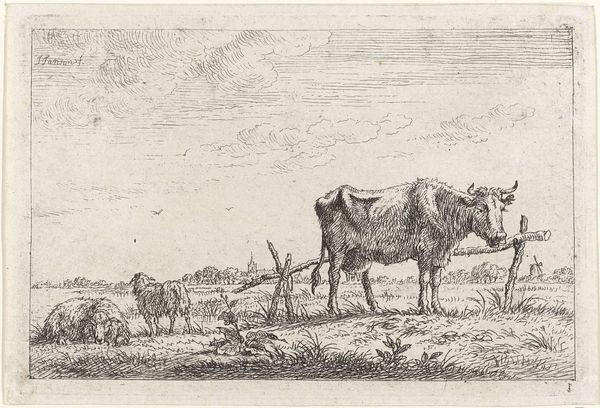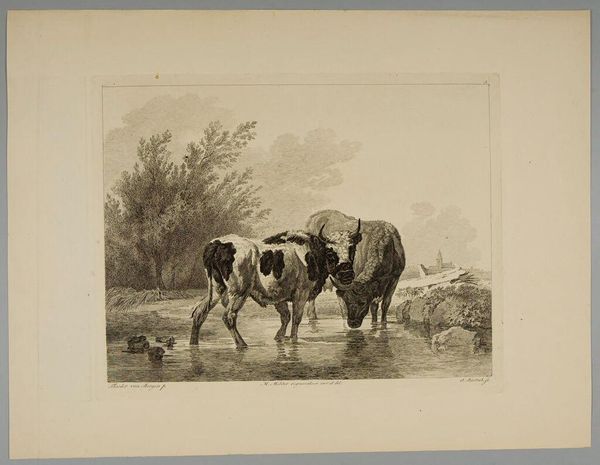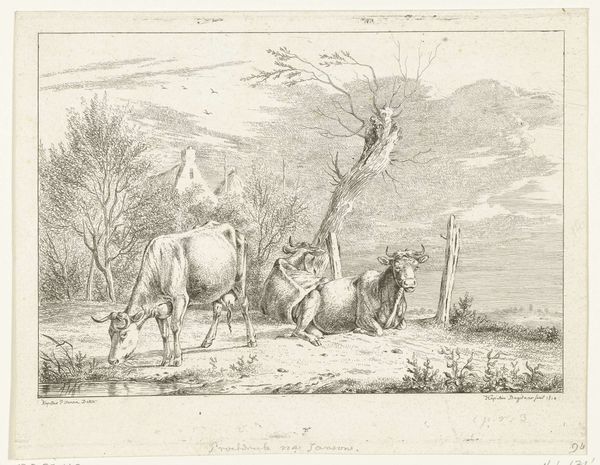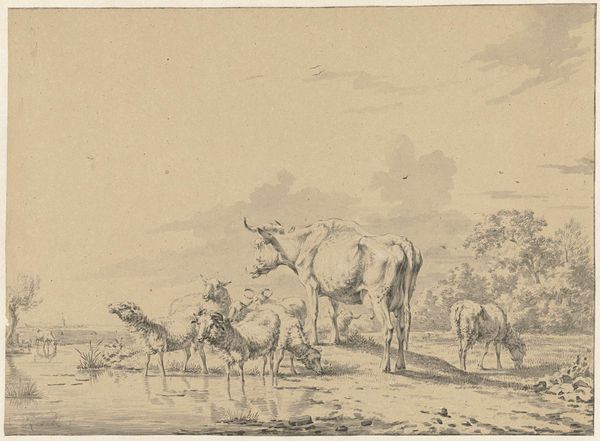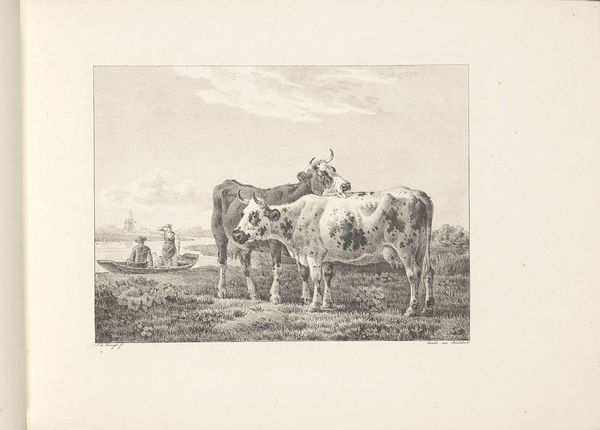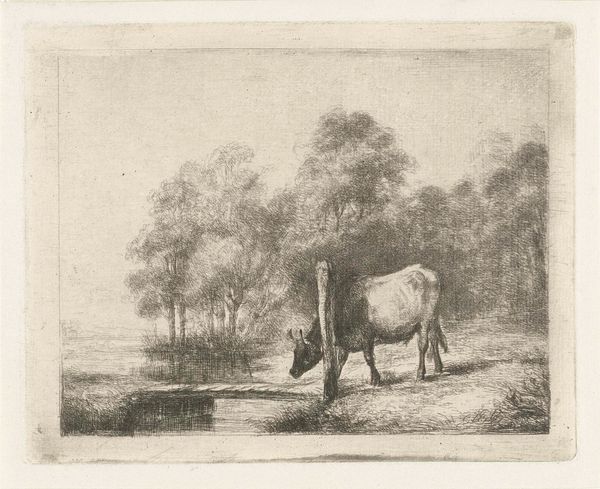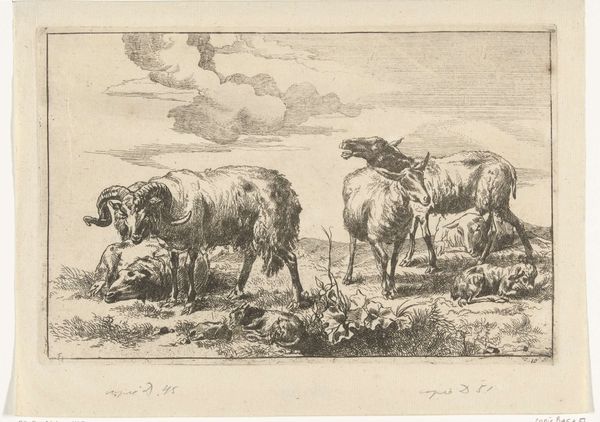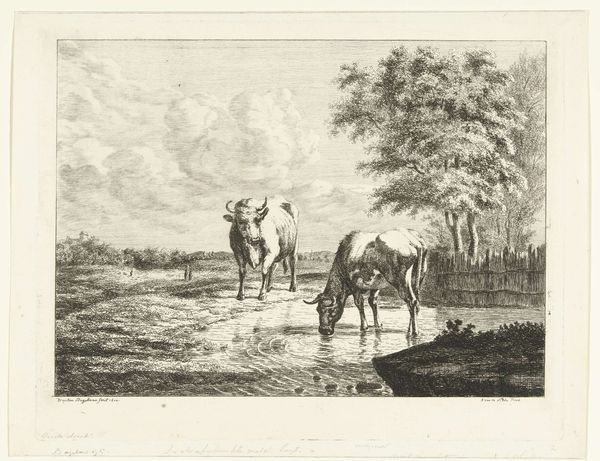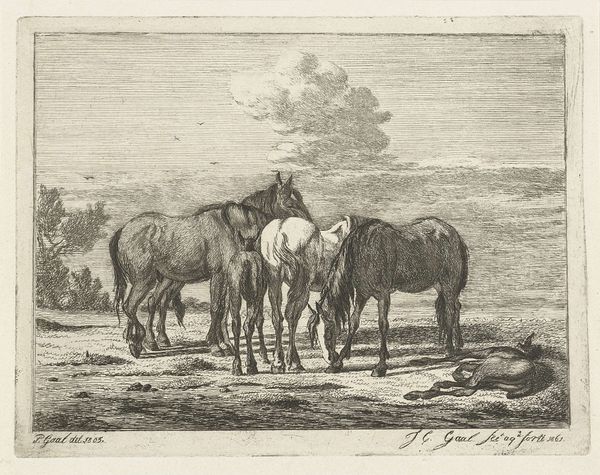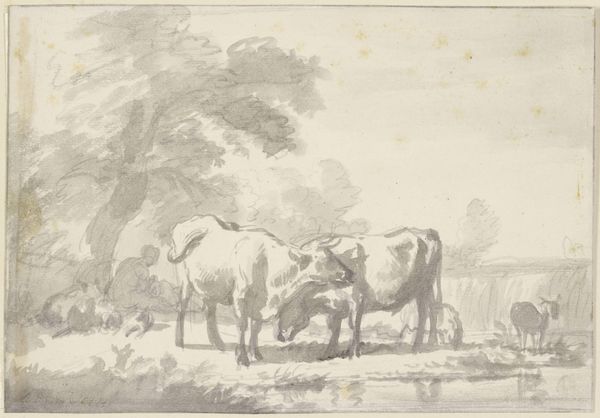
print, etching
#
animal
#
dutch-golden-age
# print
#
etching
#
landscape
#
realism
Dimensions: height 168 mm, width 212 mm
Copyright: Rijks Museum: Open Domain
Editor: This is "Two Bulls and Two Sheep by the Water," an etching by Ernst Willem Jan Bagelaar, created in 1814. There's such a quiet, pastoral feel to it. What strikes you most about this work? Curator: It invites us to consider the intersections of land, labor, and representation within the Dutch Golden Age's visual language, doesn't it? Landscape paintings weren't simply about pretty views; they often served to legitimize land ownership and reflect the social hierarchy of the time. How does the presence of livestock speak to that, do you think? Editor: I guess the livestock emphasizes the use of the land, suggesting a kind of productive harmony, which benefits those who own it. It almost seems like propaganda. Curator: Exactly! And Bagelaar, even in 1814, is echoing those visual cues. Consider the power dynamics implicit in representing animals as resources. What do you make of the scale, the subdued tones? Is there a commentary on humankind’s place in this seemingly natural world? Editor: The quiet etching aesthetic does seem to downplay any forceful dominion. Maybe it’s attempting to naturalize the hierarchy. So, it's more than just a pretty picture; it's loaded with ideas about land, power, and our relationship with nature! Curator: Precisely. The Dutch Golden Age's art served certain interests, something to remember whenever we view artworks, even those as unassuming as Bagelaar’s pastoral scene. Editor: Thanks, this has helped me look beyond the surface. I won't take landscapes at face value again.
Comments
No comments
Be the first to comment and join the conversation on the ultimate creative platform.
